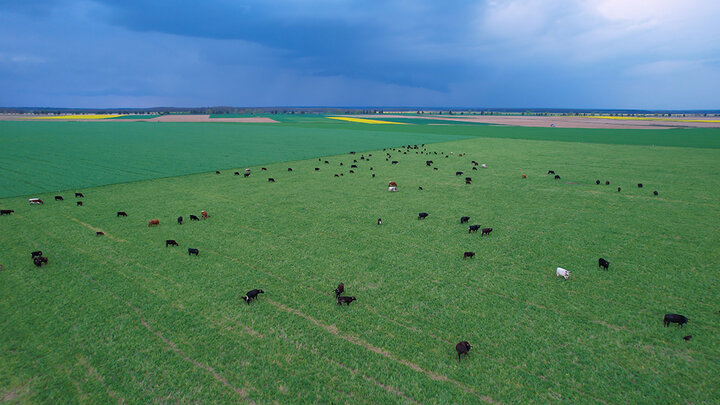By Robert Harveson, Extension Plant Pathologist
Pathogen
Uromyces appendiculatus (Pers.:Pers.) Unger. Fungal structures: urediniospores, teliospores, basidiospores, pycniospores, aeciospores. The pathogen is an obligate parasite with an autoecious, macrocyclic life cycle. Basidiospores produce pycnia on underside of leaves that form aecia after cross-fertilization with pycnia of the opposite mating type. Aecia produce hyaline, aeciospores that are 18-33 x 16-24 µm. This spore infects beans to produce brown uredinia that produce cinnamon or golden brown, echinulate urediniospores (20-33 x 18-29 µm). This serves as the repeating stage and can reinfect plants over much of the growing season. Under certain conditions, telia develop with old uredinia to produce dark black teliospores that are 24-35 x 20-29 um. After a period of dormancy, teliospores can germinate to produce a metabasidium where meiosis occurs, resulting in 4 basidiospores. Teliospore germination and production of pycnia and aecia are rare, and are not often observed in nature. Over 250 races differing in virulence have been identified worldwide, and field collections often consist of multiple races simultaneously.
Disease Symptoms
Rust symptoms first appear on leaf surfaces as small yellow or white spots. These spots enlarge and become more raised to form 1/8 in diameter rust-colored pustules(uredinia). Microscopic urediniopsores allow fungus to spread between and among fields. Pustules may also be surrounded with a yellow halo. Severe infections result in premature leaf drop. The formation ofblack teliospores at the end of the season serves as the survival structures allowing overwintering in some production areas.



Favorable Environmental Conditions
Development of disease is favored by cool to moderate temperatures below 86°F. Prolonged periods of standing water on leaf surface are also needed for germination and infection by spores. Repeating cycles of infection with urediniospores can occur at 10-14 day intervals under optimum conditions. The earlier infection takes place, the greater the potential for yield loss. Any factor that delays maturity also increases the possibility for yield reduction in the event that environmental conditions become favorable for rust development.
Management
Genetic Resistance
Plant certified seed tolerant to rust races common to a production area.
Cultural Practices
Avoid using susceptible cultivars, particularly when planting after June 25, which would expose plants to high spore pressure from earlier maturing fields. Control volunteer beans and incorporate infected bean debris after harvest and rotate with non-host crops for at least two years.
Chemical/Biological Control
Monitor fields for early infection and treat with fungicidal sprays at first outbreak to lessen disease damage.
Links
For additional information, see the UNL Extension NebGuide, Rust of Dry Beans (G1766).








